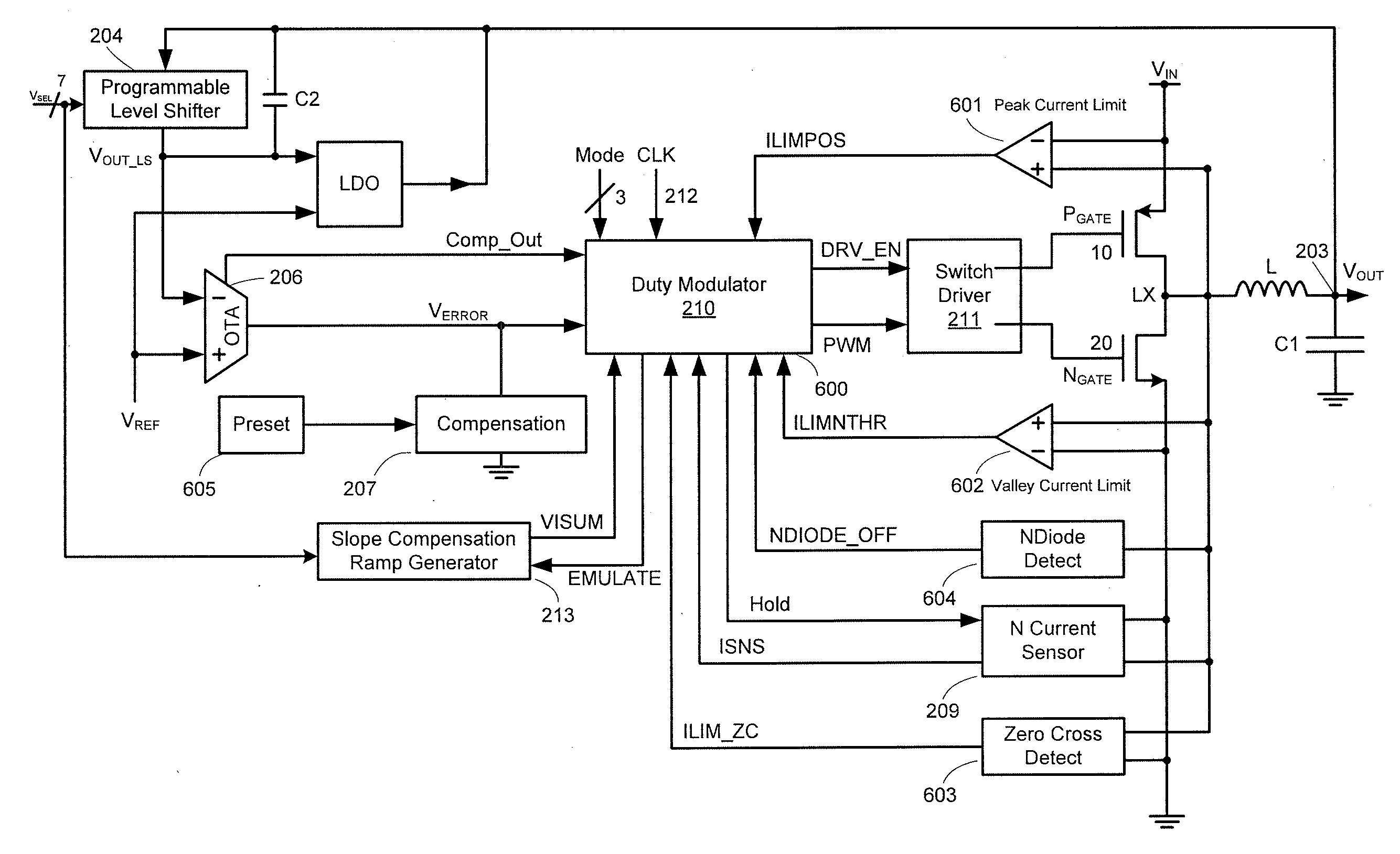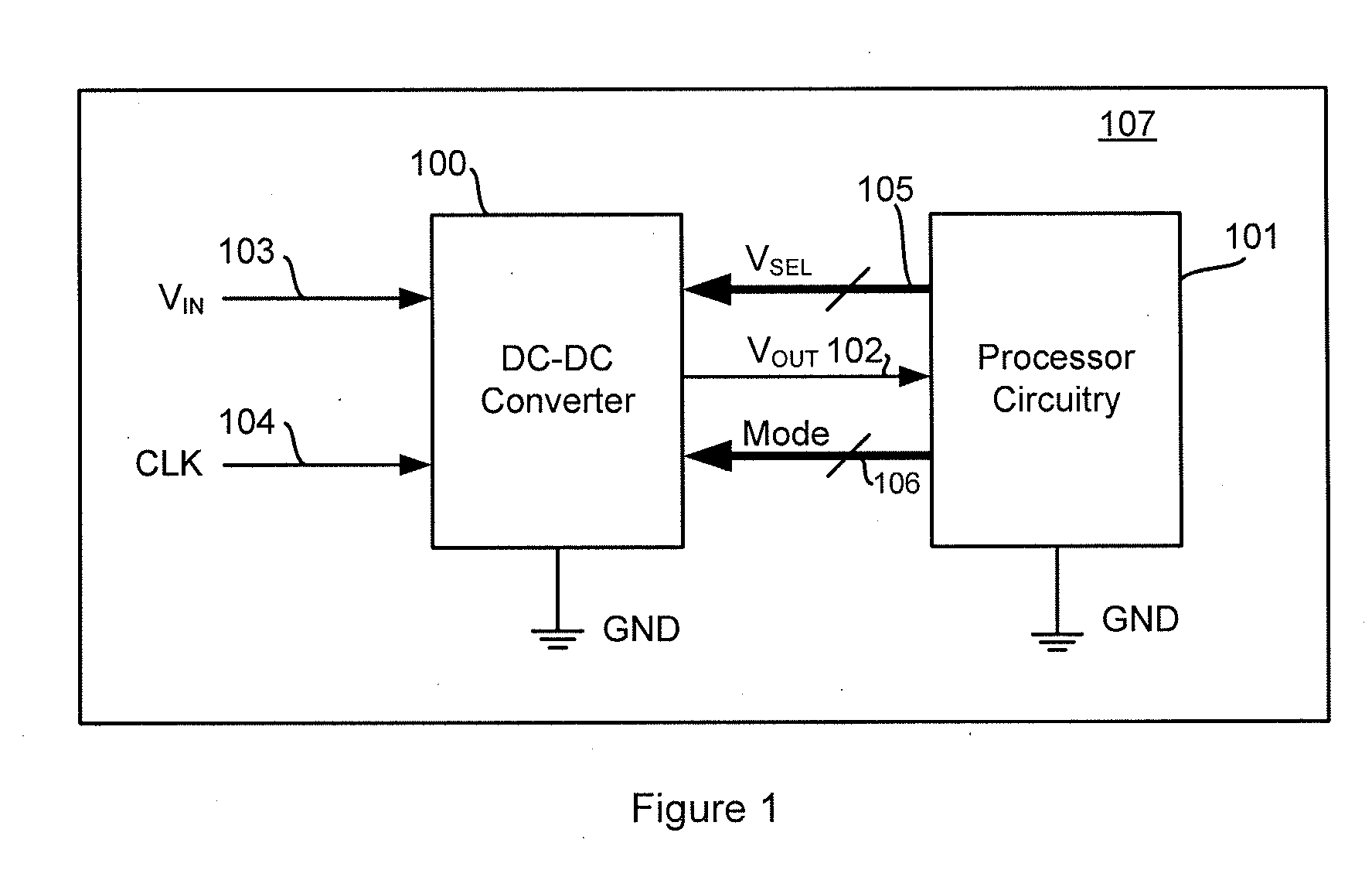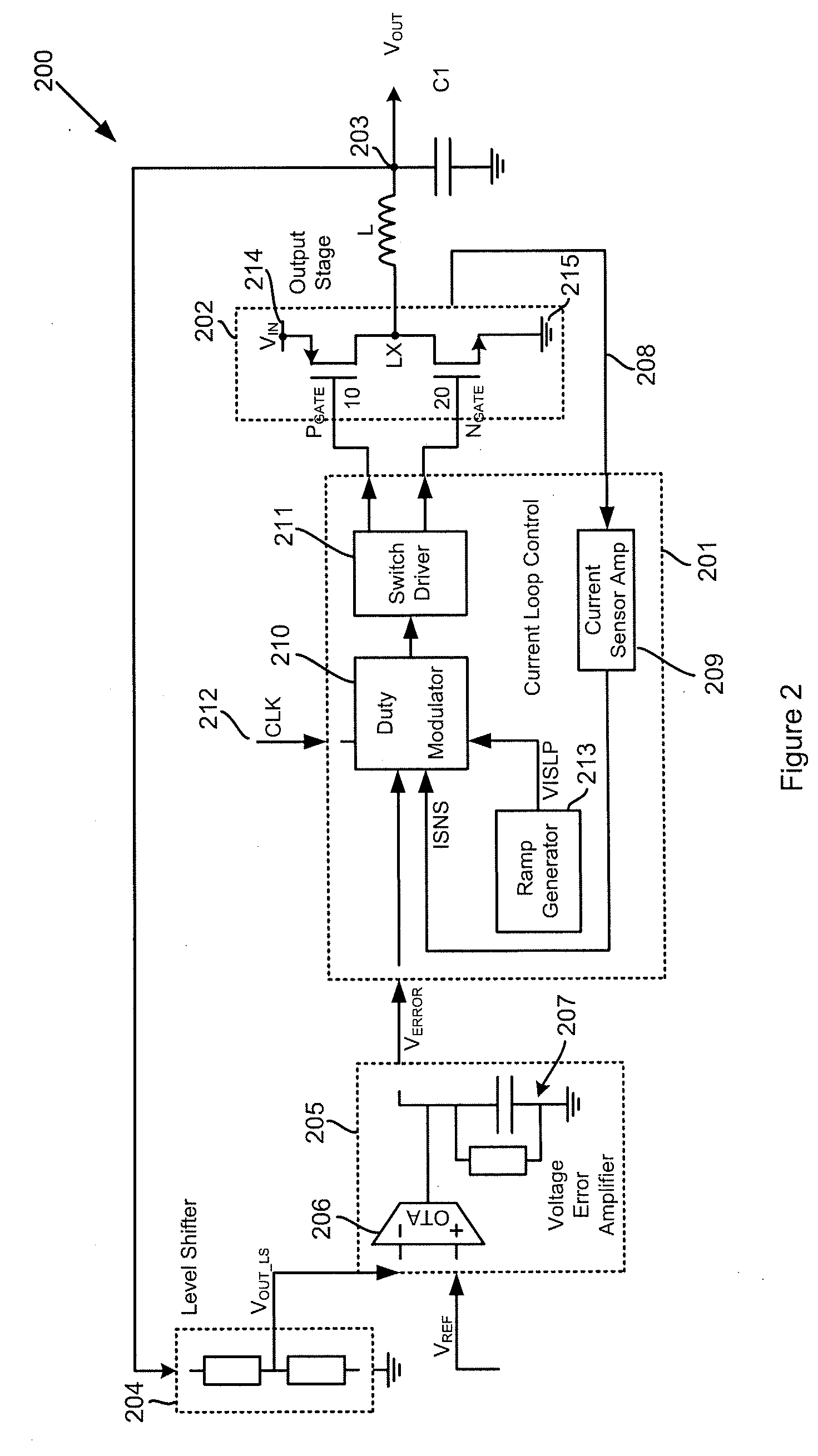Dc-dc converters
a converter and dc technology, applied in the field of voltage converters, can solve the problems of under- or overvoltage, short switch on i.e. conduction, times, and increased switching speed
- Summary
- Abstract
- Description
- Claims
- Application Information
AI Technical Summary
Benefits of technology
Problems solved by technology
Method used
Image
Examples
Embodiment Construction
[0083]As discussed above FIG. 2 shows a conventional DC-DC converter. As described above, in operation, a signal representative of the current in the inductor is compared with the VERROR signal to control switches 10 and 20.
[0084]The inductor current could be sensed using a series resistor in series with the inductor or the respective transistor. However the use of such series resistors introduces an extra source of resistive power loss and thus reduces the efficiency of the converter. Efficiency is, especially for battery powered devices, an important consideration. It is preferable therefore to use “lossless” sensing techniques; for example to sense the drain-source voltage across the PMOS due to its on resistance. This gives a voltage proportional to the PMOS current.
[0085]In operation of a conventional peak mode DC-DC converter the PMOS switch is turned on at an edge of the clock signal 212. In the lossless current sensing approach, i.e. in embodiments not having a sense resisto...
PUM
 Login to View More
Login to View More Abstract
Description
Claims
Application Information
 Login to View More
Login to View More - R&D
- Intellectual Property
- Life Sciences
- Materials
- Tech Scout
- Unparalleled Data Quality
- Higher Quality Content
- 60% Fewer Hallucinations
Browse by: Latest US Patents, China's latest patents, Technical Efficacy Thesaurus, Application Domain, Technology Topic, Popular Technical Reports.
© 2025 PatSnap. All rights reserved.Legal|Privacy policy|Modern Slavery Act Transparency Statement|Sitemap|About US| Contact US: help@patsnap.com



